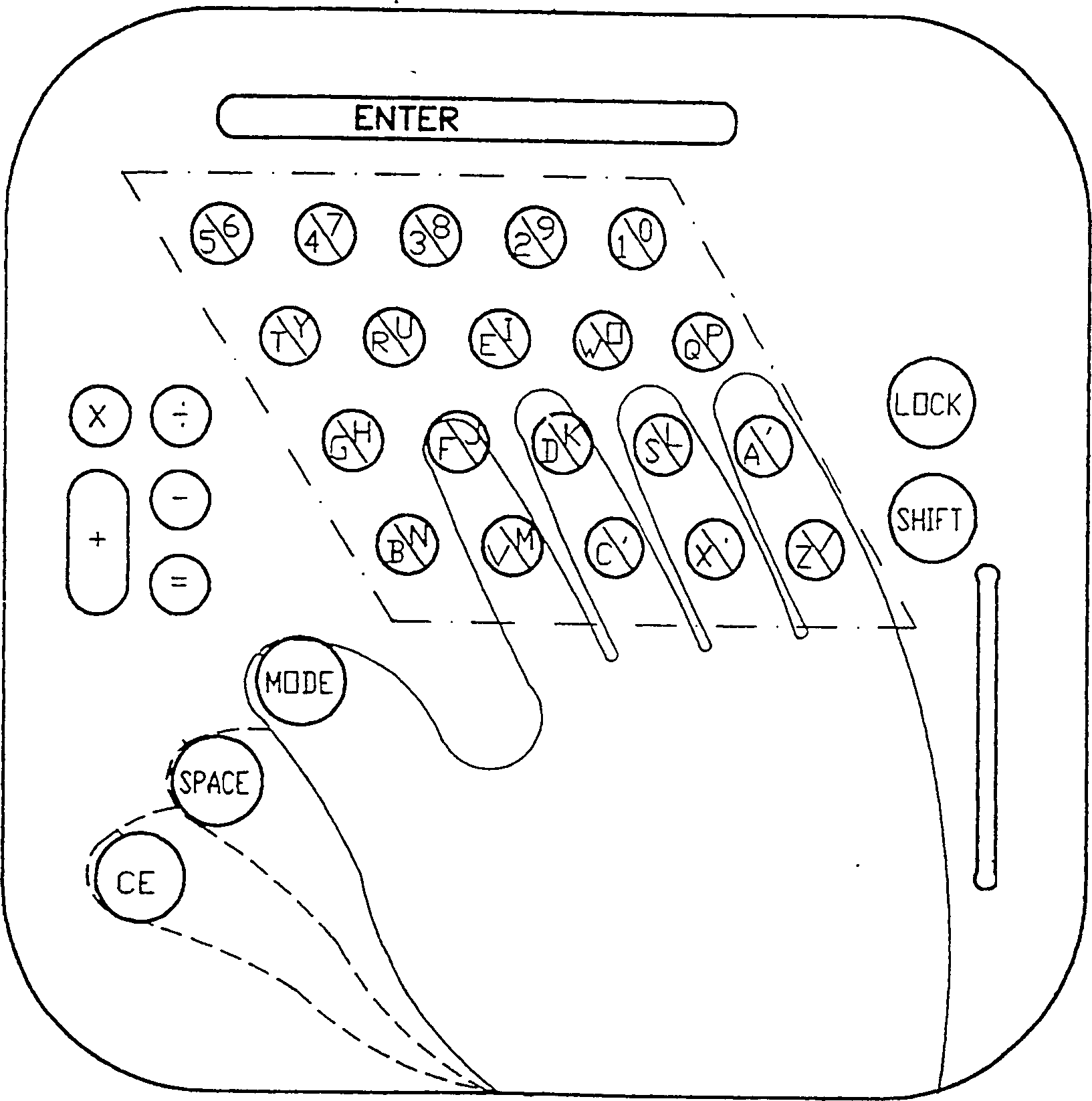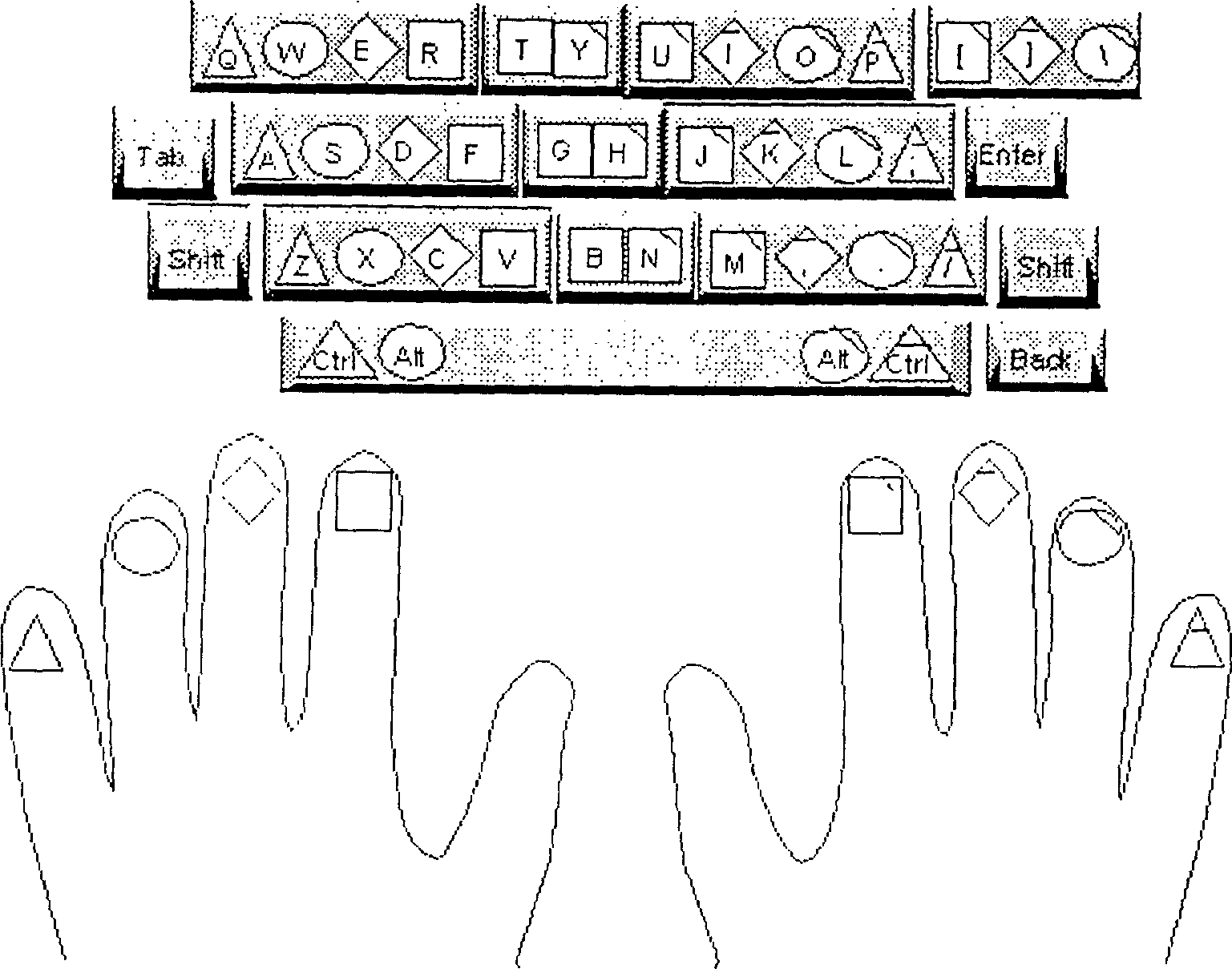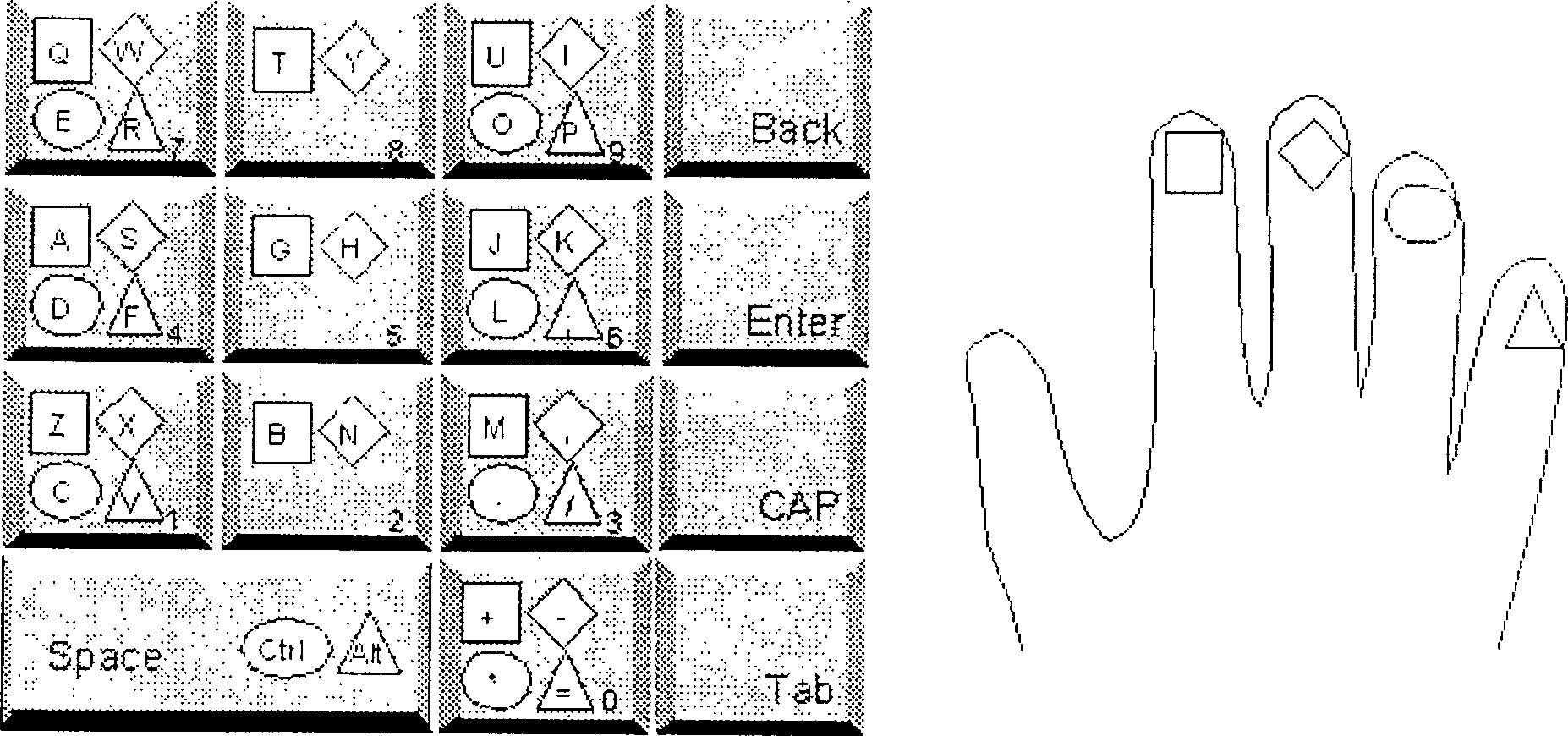Finger identifying keyboard
A finger and keystroke technology, which is applied in the field of keyboards recognized by finger keystrokes, to achieve the effect of maintaining input habits and reducing the number
- Summary
- Abstract
- Description
- Claims
- Application Information
AI Technical Summary
Problems solved by technology
Method used
Image
Examples
Embodiment Construction
[0023] Describe in detail below in conjunction with accompanying drawing.
[0024] figure 1 is a schematic diagram of a reduced-sized keyboard of the prior art. It has been described above. figure 2 It is an embodiment of the keyboard of the present invention that recognizes keys by finger, and shows the layout structure of the two-handed keyboard. The frames of different shapes in the figure represent the actual characters produced when different fingers strike keys. As shown in the figure, the entire input device is divided into a keypad and a finger contact. The function of the keyboard is the same as that of an ordinary keyboard, and the finger contact is used to distinguish the fingers of the keystrokes. Only four fingers have contacts here, because the thumb on the traditional keyboard is only used for the space bar, so the final code can be directly generated for the space bar. The implementation of connecting the keyboard is the same as that of the common keyboard...
PUM
 Login to View More
Login to View More Abstract
Description
Claims
Application Information
 Login to View More
Login to View More - R&D
- Intellectual Property
- Life Sciences
- Materials
- Tech Scout
- Unparalleled Data Quality
- Higher Quality Content
- 60% Fewer Hallucinations
Browse by: Latest US Patents, China's latest patents, Technical Efficacy Thesaurus, Application Domain, Technology Topic, Popular Technical Reports.
© 2025 PatSnap. All rights reserved.Legal|Privacy policy|Modern Slavery Act Transparency Statement|Sitemap|About US| Contact US: help@patsnap.com



